

At Ease With Hand and Mind
Calligraphy, Literature, and Contemporary Art
July 27 – Sept 27, 2025


FONG CHUNG-RAY 馮鍾睿
b. 1934 in Nanyang, China; lives and works in San Francisco, CA
FONG Chung-Ray (b. 1934, Nanyang, China) is a pioneering artist known for his contributions to Taiwanese art modernization. In 1949, he arrived in Taiwan as a soldier and later pursued his passion for art, graduating from the Political Staff College in 1954 with a degree in Fine Arts. In 1958, he cofounded the Four Seas Art Association alongside artist Hu Chichung. Three years later, he joined the influential Fifth Moon Group, shifting his focus from oil painting to the innovative exploration of ink. In the early 1970s, he was awarded a prestigious Rockefeller III Foundation fellowship, which allowed him to immerse himself in contemporary art movements across Europe and the United States. In 1975, Fong immigrated to the United States, eventually settling in the San Francisco Bay Area, where he continues to live and work today.
Fong’s painting style, during the 1960s, was similar to the abstractionism in postwar America, and was typical of the modern style in the 1960s with his simplistic but vivid and powerful composition. During that period, he switched to oil brush, xuan paper and ink, returning to the traditional way of creation. He also invented a brush made out of fibers taken from the trunks of palm trees, which gave a rawer aspect to his tints of colors. After moving to the United States, his style moved into another phase; the characteristics of this period were influenced by calligraphy strokes and the study of Buddhism. He combined written characters and abstract composition, transforming Chinese characters into art. After 1989 he again opened up a new creative field: collage, in which he created texture by adding layers of colors. Fong Chung-Ray has always been strict to his own creation, loyal to his self-perception, and this way he conveys deep emotionality as well as rationality through art, carrying personal spiritual thinking and practice.
His selected solo exhibitions include: The Eternal Abstract: Fong Chung Ray Solo Exhibition (Asia Art Center, Taipei, 2017) and Solo Exhibition (National Museum of History, Taipei, 1974). Fong Chung-Ray has participated in numerous significant group exhibitions, including the Four Seas Art Exhibition (1958–1961) and the Fifth Moon Group Exhibition (1961–1974). His works were featured in the Biennale de São Paulo in São Paulo in 1959 and 1963, Trends in 20th Century Chinese Painting at Stanford University Museum in 1968, and The Experimental Sixties: Avant-Garde Art in Taiwan at Taipei Fine Arts Museum in 2003.

FONG CHUNG-RAY 馮鍾睿
Other notable exhibitions include the Modern Water-Ink Painting Biennial Exhibition at Kuandu Museum of Fine Arts, Taipei (2007), 1960—The Origin of Taiwan’s Modern Art at Asia Art Center (2016), FROM CHINA TO TAÏWAN. Pioneers of Abstraction (1955–1985) at Musée d’Ixelles (2017), and The Weight of Lightness: Ink Art at M+ Museum at the West Kowloon Cultural District (2017). In recent years, his works have been featured in The Birth of Modernist Art Movement in Taiwan at the National Museum of History (2024), the trio exhibition The Longing for the Abstract: Chuang Che, Fong Chung-Ray, Yang Chihung at Asia Art Center (2022), Revisiting the Origin of Taiwan’s Modern Art in the 1960s by Chu Weibor and Fong Chung-Ray, presented by Asia Art Center at Art Basel Hong Kong (2018), Crouching Talents: The Abstract Art of Eastern Origin at Asia Art Center, Beijing (2019), and Transgression throughout the Volatile World—Inaugural Exhibition of Asia Art Center Taipei New Flagship Space at Asia Art Center (2021). Fong’s works are part of public collections at the Pompidou Centre and Musée Cernuschi in Paris, France, as well as the San Francisco International Airport and the Los Angeles County Museum of Art in the United States.


Mixed media on canvas
53 3/4 x 48 in | 136.5 x 122 cm
80,000 USD
2019-3-6, 2019


2017-9-24, 2017
Mixed media on canvas
60 x 48 in | 152.4 x 122 cm
95,000 USD

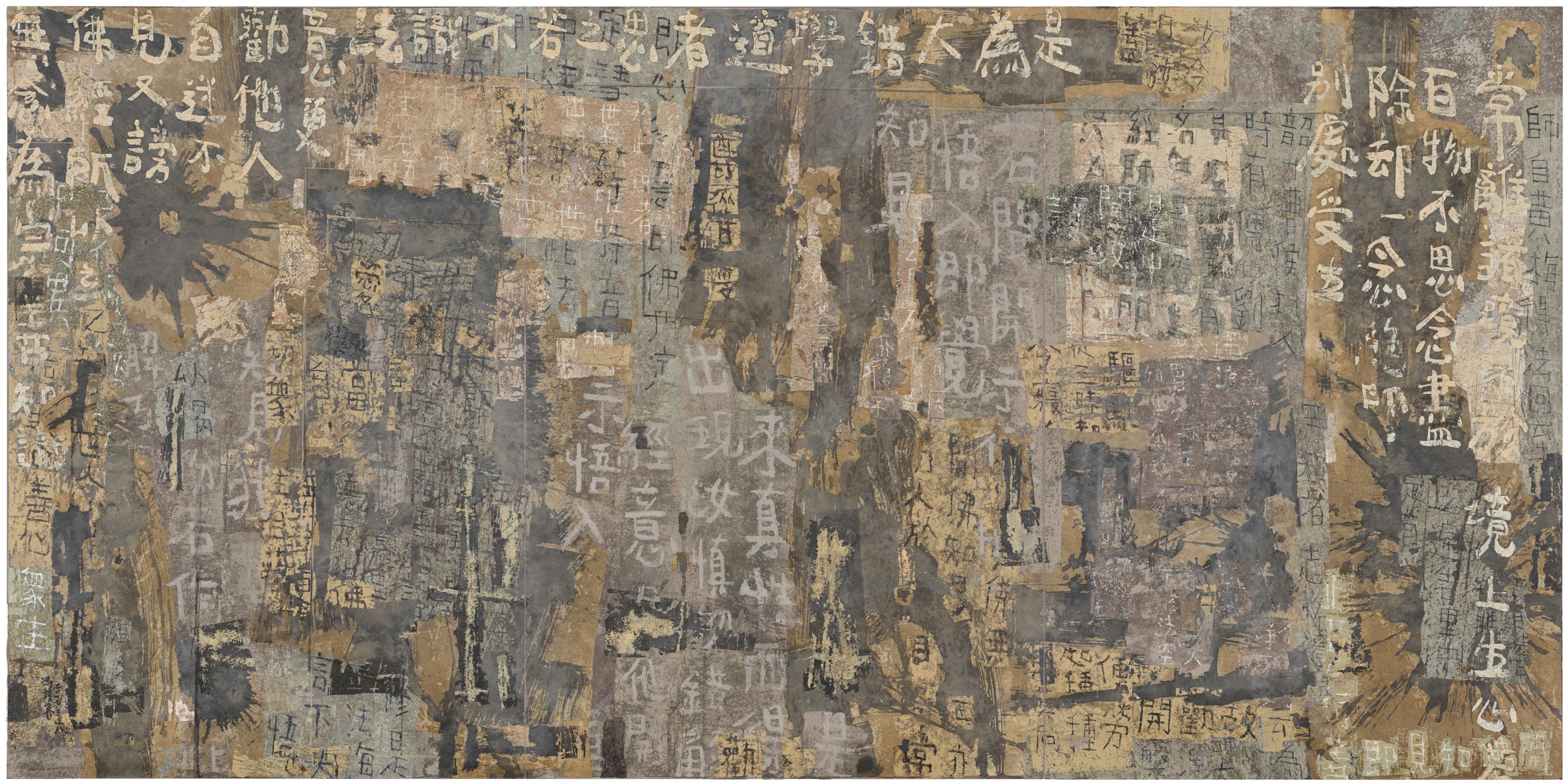
Mixed media on canvas, triptych
72 x 48 in | 183 x 122 cm (each)
72 x 144 in| 183 x 365.76 cm (as triptych)
250,000 USD
2017-3-8, 2017


Detail, panel 1 of 3: 2017-3-8, 2017


Detail, panel 2 of 3: 2017-3-8, 2017

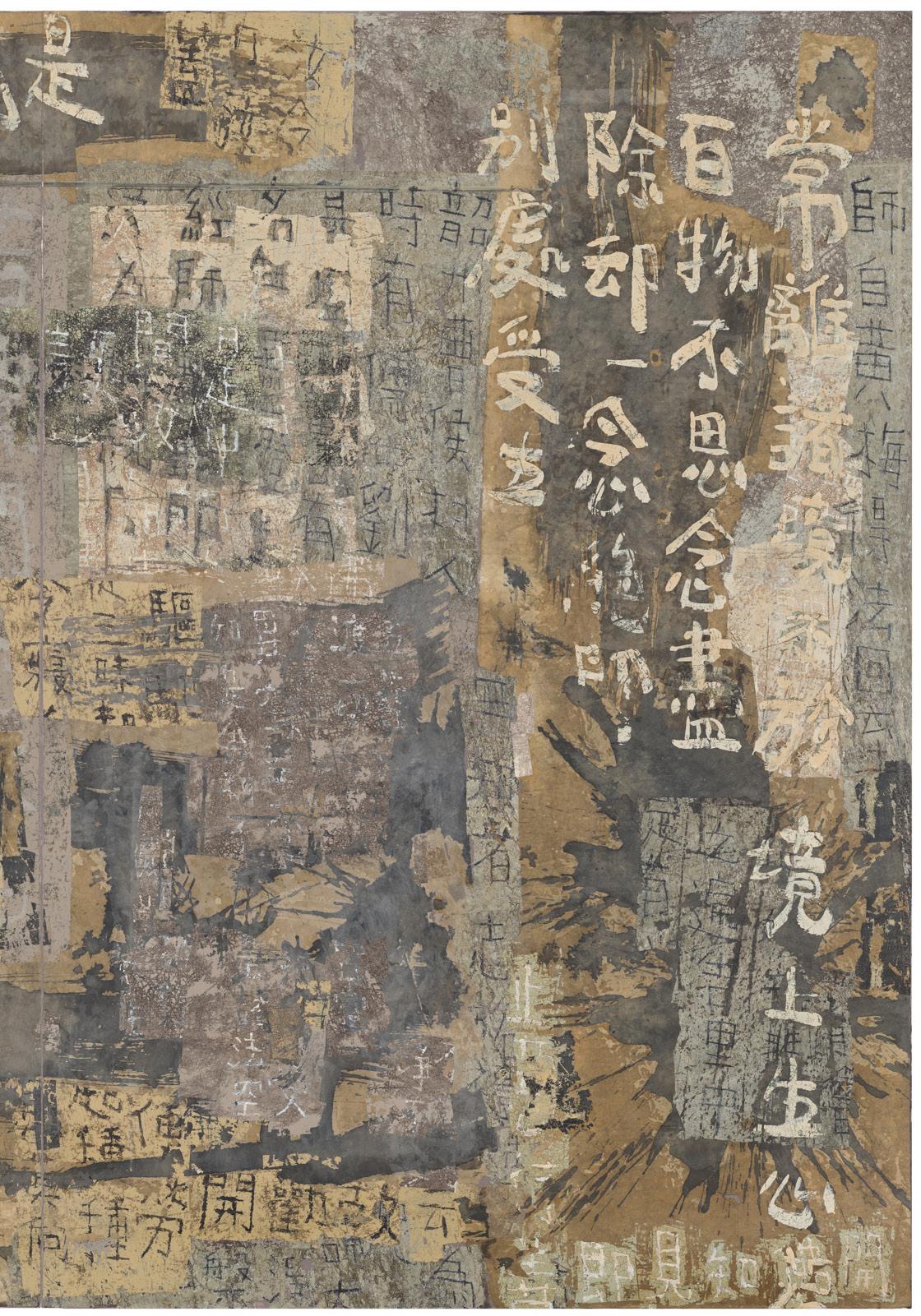
Detail, panel 3 of 3: 2017-3-8, 2017

BIOGRAPHY GU GAN 古干
Lived 1942–2020
Gu Gan was a Chinese painter‑calligrapher whose experiments with colour, character deconstruction, and Western modernism positioned him as a primary catalyst of the mainland’s “modern calligraphy” movement. Raised in Changsha, Hunan, Gu entered the Middle School attached to the Central Academy of Fine Arts in Beijing, graduating in 1962. After a decade of labour in a printing factory during the Cultural Revolution, he was reassigned in 1975 to the Fine‑Arts section of the People’s Literature Publishing House, where editorial work allowed him to resume studio practice.
In October 1985 he organised the First Modern Calligraphy Exhibition at the National Art Museum of China, an event widely regarded as the public birth of Chinese modernist calligraphy. That same year he was elected founding chairman of the Society of Modern Calligraphy and Painting, formalising his role as spokesman for the movement.
Gu articulated his approach in two milestone texts: The Formation of Modern Calligraphy (1986), the first book on the subject inside China, and The Three Steps of Modern Calligraphy (1990), published bilingually and later adopted in art colleges. His essays promoted elongation, fragmentation, multi‑script layering, and the use of coloured ink as strategies to “re‑vitalise” classical forms.
Works by Gu Gan reside in major public collections worldwide, including the British Museum, London; Ashmolean Museum of Art and Archaeology, Oxford; Museum of East Asian Art, Cologne; Museum of Fine Arts, Vienna; National Art Museum of China, Beijing; Chinese Olympic Museum, Beijing; and Xunyao Chinese Characters Museum, Chengdu. His calligraphy featured in the landmark 2002 British Museum exhi bition Brushes with Surprise: The Art of Calligraphy in Modern China. In 1998 he became the first Chinese artist invited to design the label for Château Mouton‑Rothschild’s 1996 grand cru, sharing an honour ac corded to masters such as Zao Wou‑ki and Xu Lei. Alisan Fine Arts presented a solo exhibition of his work in 2014 and highlighted him at Ink Asia 2015, Hong Kong.
Acknowledged by critics as the “forefather” of modern calligraphy, Gu Gan chaired the inaugural Society of Modern Calligraphy and Painting after organising the movement’s first major exhibition in 1985. His 33 sport‑themed calligraphic paintings created for the 2008 Beijing Olympics earned him the American Sport Art Museum & Archives “Sport Artist of the Year” title. Through relentless experimentation and global exhi bition, he has secured a lasting place in the canon of contemporary Chinese art, inspiring new generations to see the written word as an arena for avant‑garde invention.

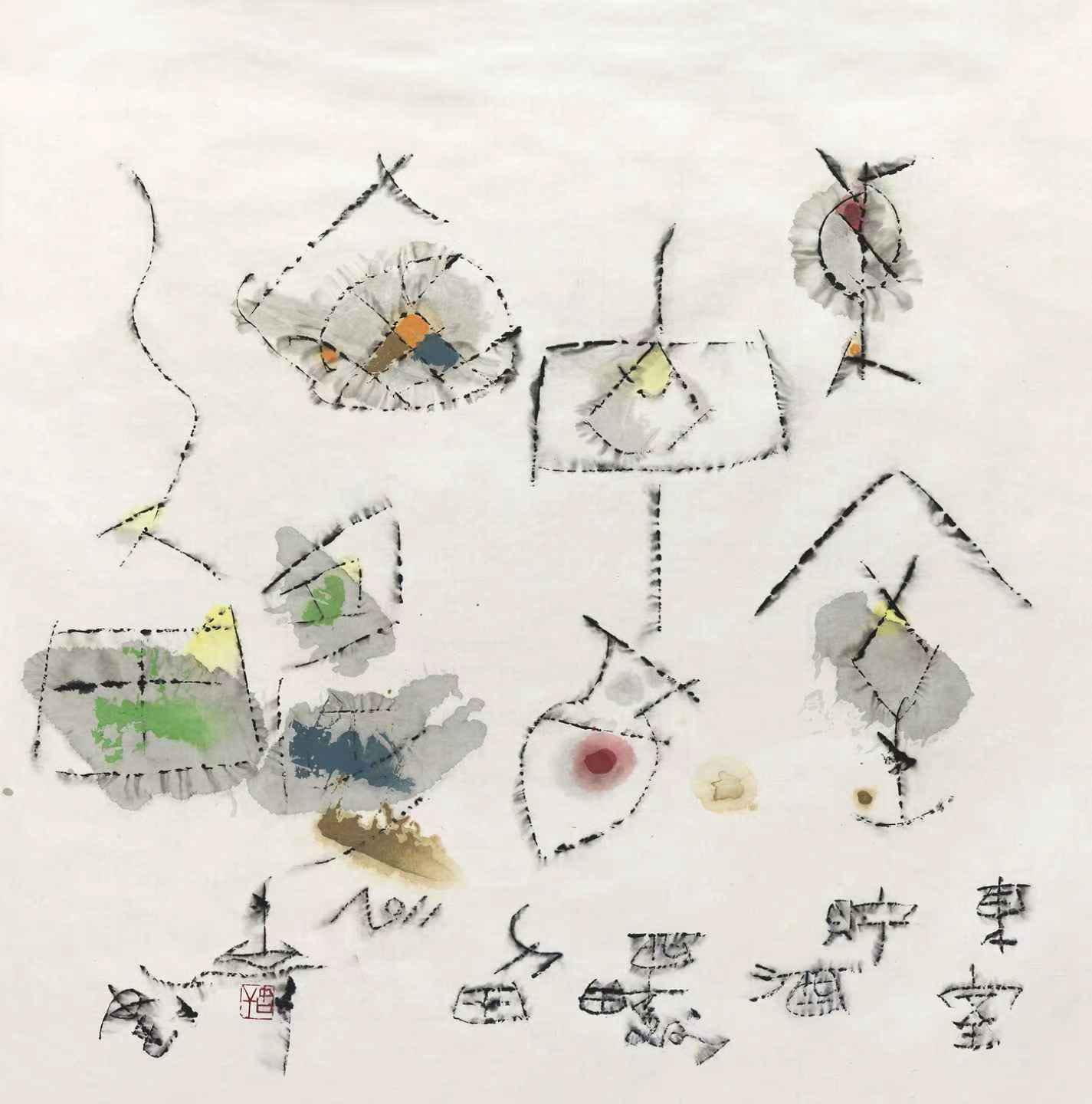
Chamber Deliberate Wine West Farmland Strength Field, 2011
Ink and acrylic on paper
69 x 69 cm | 27 x 27 in


Pleasure in the Forest, 2013
Ink and acrylic on paper
31 x 44 cm | 12 x 17.25 in
林中乐

GU WENDA 谷文达
b. 1955 in Shanghai; lives and works between New York and Shanghai
Gu Wenda was born in Shanghai in 1955. In 1981, he received his M.F.A. from the China Academy of Art, where he also taught traditional Chinese painting from 1981 to 1987. That same year, he was awarded a Canada Council grant for visiting foreign artists and relocated to the United States.
In 1999, Art in America featured Gu Wenda’s monumental project United Nations on its March cover, making him the first Chinese artist to receive this distinction. In 2015, he was honored with the Lifetime Achievement Award for Asian Contemporary Art at the Prudential Eye Awards in Singapore.
In Contemporary Chinese Art History (1985–1986), Gao Minglu wrote, “In the ‘85 New Wave Movement, Gu Wenda was the only individual artist who was capable of contending with the many groups.”
Art historians Marilyn Stokstad and David Cateforis described Gu’s work in their widely used textbook Art History:
“In its ambitious attempt to address in artistic terms the issue of globalism that dominates discussions of contemporary economics, society, and culture, Gu’s work is remarkably timely. Yet, like all important art, it is meant to speak not only to the present but also to the future, which will recognize it as part of the fundamental quest of artists throughout history to extend the boundaries of human perception, feeling, and thought and to express humanity’s deepest wishes and most powerful dreams.
A ‘great utopia of the unification of mankind probably can never exist in our reality,’ admits Gu, ‘but it is going to be fully realized in the art world.’”
Reflecting on the art revival of 1985, Gu Wenda wrote in his Artwholism Philosophical Manuscript:
“It showed the urgent situation of ‘the wind sweeping through the tower heralds a rising storm in the mountains and the city might crumble under the mass of dark clouds.’ (Tang poetry) Traditional painting was dead, and so was art. From what I saw, it was a historical opportunity—what is called the phoenix’s nirvana, rebirth through fire.”

BIOGRAPHY
GU WENDA 谷文达
b. 1955 in Shanghai; lives and works between New York and Shanghai
Art critic Huang Zhuan observed:
“Gu Wenda’s status in contemporary Chinese art history is grounded in two key achievements within China: his comprehensive critique of both native linguistic culture and Western influence, and his persistent artistic experimentation. His critical reconstruction of native Chinese culture serves as both the starting point and the core of his practice. Among his many art projects, the Ink series represents the most sustained, expansive, and in-depth experimental effort. It forms the foundation of our study of his work within both intellectual and art historical contexts and is intertextually linked with his two other major projects: United Nations and Forest of Stone Steles: A Retranslation and Rewriting of Tang Poetry.”
Huang further notes that as a pioneer of contemporary experimental ink painting, Gu’s conceptual framework centers on three thematic subjects: character-images, cultural language, and biological materials. His practice intersects with philosophy, cultural studies, linguistics, biology, and art history, forming a wide-reaching interdisciplinary approach.
In a 1996 review for The New York Times, chief art critic Roberta Smith remarked:
“Wenda Gu… seems to be joining the list of artists whose work is attacked by a larger public questioning its status as art and defended by fervent art worlders who ignore its obvious weakness in the face of any opposition.”
British art historian Edward Lucie-Smith wrote in Visual Arts in the Twentieth Century:
“In one sense, Wenda Gu’s project, with its all-embracing ambition, relates to European Romanticism—to ideas inherited by the Modernists from the culture of the late eighteenth and early nineteenth centuries. In another sense, it is linked, as he himself points out, ‘to growing self-awareness of regionalism and otherness.’ It thus typifies the tensions and deep divisions to be found in the most characteristic artistic expressions of the early 1990s.”
He continued in a 2002 exhibition catalogue:
“Wenda Gu is the most celebrated of a new generation of avant-garde artists who emerged from China in the very late 1980s and in the 1990s, as a result of the ‘open door’ policy that succeeded the chauvinism of the Cultural Revolution. He has made himself into a fully international figure. In more senses than one, he is a key figure in the culture of our time.”


【望廬山瀑布】簡體詞系列
Watching the Lushan Waterfall, Simplified Chinese series, 2024 Ink on Xuan Paper
48.5 x 180 x 2 cm | 19 x 70.75 in

BIOGRAPHY
WANG TIANDE 王天德
b. 1960 in Shanghai, China; lives and works in Shanghai, China
Wang Tiande (b. 1960 in Shanghai) graduated from the Chinese Painting Department of Zhejiang Academy of Fine Arts (now the China Academy of Art) in 1988 and later obtained his doctoral degree from its Department of Calligraphy. He is currently a professor at the Fudan University in Shanghai.
Celebrated for his revolutionary takes on traditional Chinese art in China and abroad, Wang Tiande is best known for his burned landscapes, consisting of a painted underlayer and an overlayer burned with incense sticks. More recently, he has incorporated into the landscapes rubbings of famous ancient steles from his own collection. In their fusion of the fleeting and the timeless, Wang Tiande’s works meditate on creation and destruction. They are both elegies to the past and celebrations of its present persistence.
Wang has had many solo and group exhibitions in major museums, academic institutions and well-known galleries nationally and internationally. Major museum and academic institution exhibitions include: Nanjing University of the Arts Art Museum (2023); Los Angeles County Museum of Art (2021); Cantor Arts Center at Stanford University (2018); National Art Museum of China, Beijing (2018); Guangdong Museum of Art (2017); Beijing Palace Museum Fujian Palace (2015); Suzhou Museum (2014); Today Art Museum, Beijing (2014); Metropolitan Museum of Art, New York (2013); University of the Arts Sydney, Australia (2010); Spencer Museum of Art, Kansas, USA (2009); among many others.
Wang’s work has been collected by internationally renowned art museums and academic institutions, including: the British Museum, London; Oxford University Museum of Art; Paris Cernuschi Museum; The Metropolitan Museum of Art, New York, NY; Brooklyn Museum, Brooklyn, NY; Los Angeles County Museum of Art, Los Angeles, CA; Museum of Fine Arts, Boston, MA; The Art Institute of Chicago, Chicago, IL; UC Berkeley Art Museum and Pacific Film Archive, Berkeley, CA; Asian Art Museum, San Francisco, CA; Montreal Museum of Contemporary Art, Montreal, Canada; Royal Ontario Museum, Toronto, Canada; Hong Kong Museum of Art, Hong Kong; Shanghai Art Museum, Shanghai, China; Suzhou Museum, Suzhou, China; Guangdong Art Museum, Guangzhou, China; Shenzhen Art Museum, Shenzhen, China; Today Art Museum, Beijing, China; among many others.


越走越远 Farther and farther away, 2022
Xuan paper, ink, burn marks, rubbing
28.7 x 34.7 in | 73 x 88 cm


小桥漫水家 A Home Nestled by the Small Bridge and Flowing Water, 2017
Xuan paper, ink, burn marks, rubbing
18 x 22.5 in | 20.3 x 57.2 cm
24.38 x 28.88 in | 61.9 x 73.4 cm (framed)

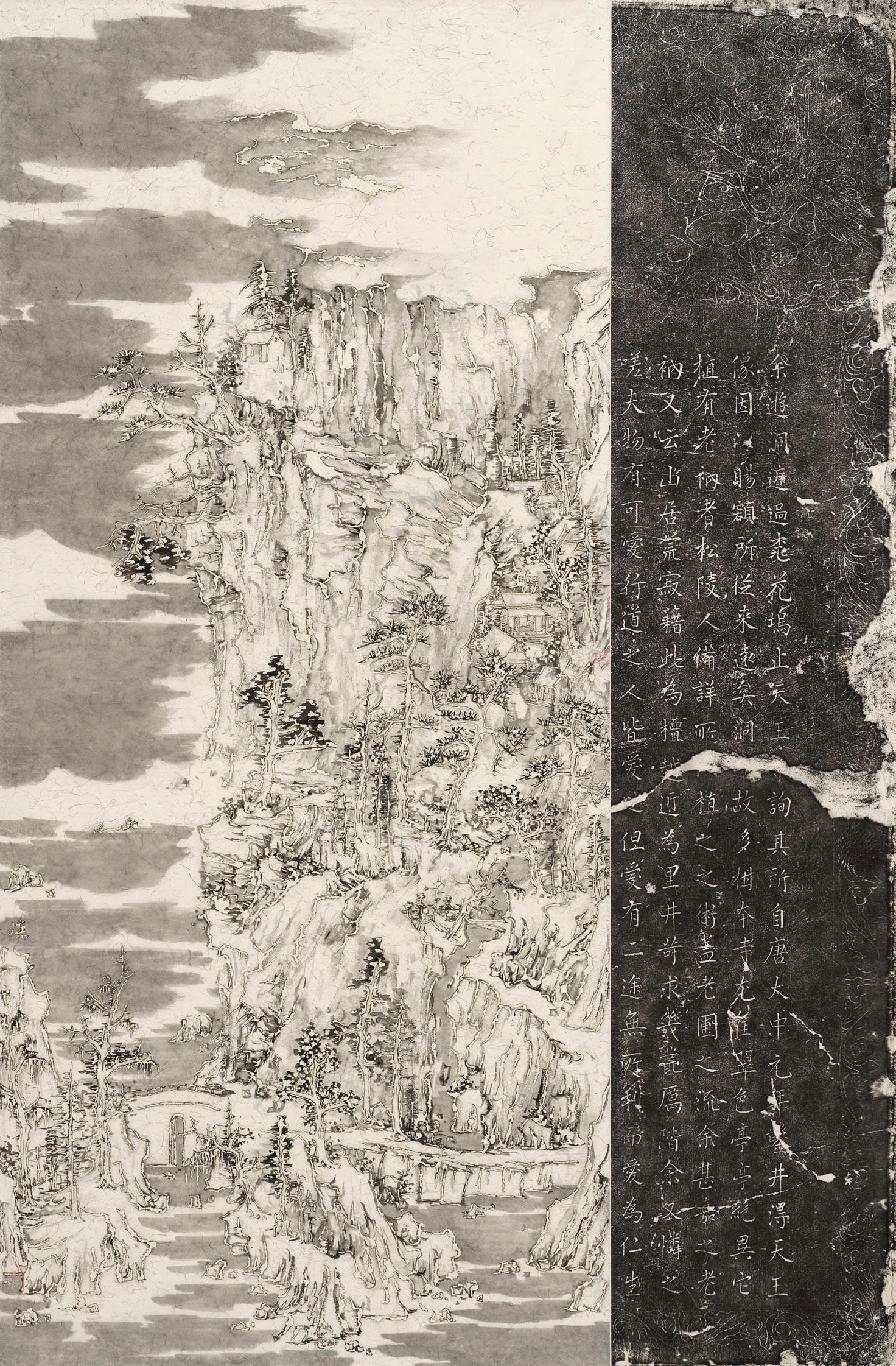
百丈烟叠图 A Cliff Encircled by Layers of Drifting Clouds, 2022
Xuan paper, ink, burn marks, rubbing
70.5 x 46.25 in | 179.1 x 117.5 cm


陶庐登雪图 Hermit Tao’s Hut in the Snowy Mountain Vista, 2022
Xuan paper, ink, burn marks, high-resolution calligraphy scan
34 x 29 in | 86.4 x 73.7 cm


漫山雪霁图 Rolling Mountains after the Snow, 2022
Xuan paper, ink, burn marks, high-resolution calligraphy scan
13 x 69.5 in | 33 x 176.53 cm


Detail, 漫山雪霁图 Rolling Mountains after the Snow, 2022


Boundless, 2021
Xuan paper, ink, and burn marks
32 x 120 in | 81.3 x 304.8 cm

BIOGRAPHY XIE XIAOZE 谢晓泽
b. 1966 in Guangdong, China; Lives and works in Stanford, CA
Xie Xiaoze is an internationally recognized artist and the Paul L. and Phyllis Wattis Professor of Art at Stanford University. Xie received his MFA degrees from the Central Academy of Arts and Design in Beijing and the University of North Texas.
Xie has exhibited extensively in the US and internationally. His recent solo exhibitions include shows at Stanford University, University of California, Berkeley, Anglim/Trimble Gallery, Asia Society Museum in New York, and the Denver Art Museum. Xie’s work has garnered critical acclaim, and his exhibitions have been reviewed in The New York Times, Art in America, Artnews, and hyperallergic, among others.
His work is in the permanent collection of such institutions as Denver Art Museum, the Museum of Fine Arts Houston, Baltimore Museum of Art, Asian Art Museum in San Francisco, San Jose Museum of Art, the Oakland Museum of California, Scottsdale Museum of Contemporary Art, and more.
Xie received the Asia Game Changer West Award from the Asia Society Northern California (2022), the Painters and Sculptors Grant from the Joan Mitchell Foundation (2013), the Pollock-Krasner Foundation Grant (2003), and artist awards from the Dallas Museum of Art and Phoenix Art Museum.


《觀乎天文,以察時 變》(敦煌藏經洞系列), Astronomy and Astrology (from the Dunhuang Library Cave series), 2020
Ink on Xuan paper
28 x 50 in | 71 x 127 cm
Framed: 33.5 x 56.25 in | 85.1 x 142.9 cm


Rain of Languages (Buddhist Sutras), 2023
Resin, film, mineral color, resin color, light
9 57/127h x 8 84/127w x 9 57/127d in


Rain of Languages (Tocharian), 2023
Resin, film, mineral color, resin color, light 9 57/127h x 8 84/127w x 9 57/127d in


Rain of Languages (The Heart Sutra), 2023
Resin, film, mineral color, resin color, light 9 57/127h x 8 84/127w x 9 57/127d in

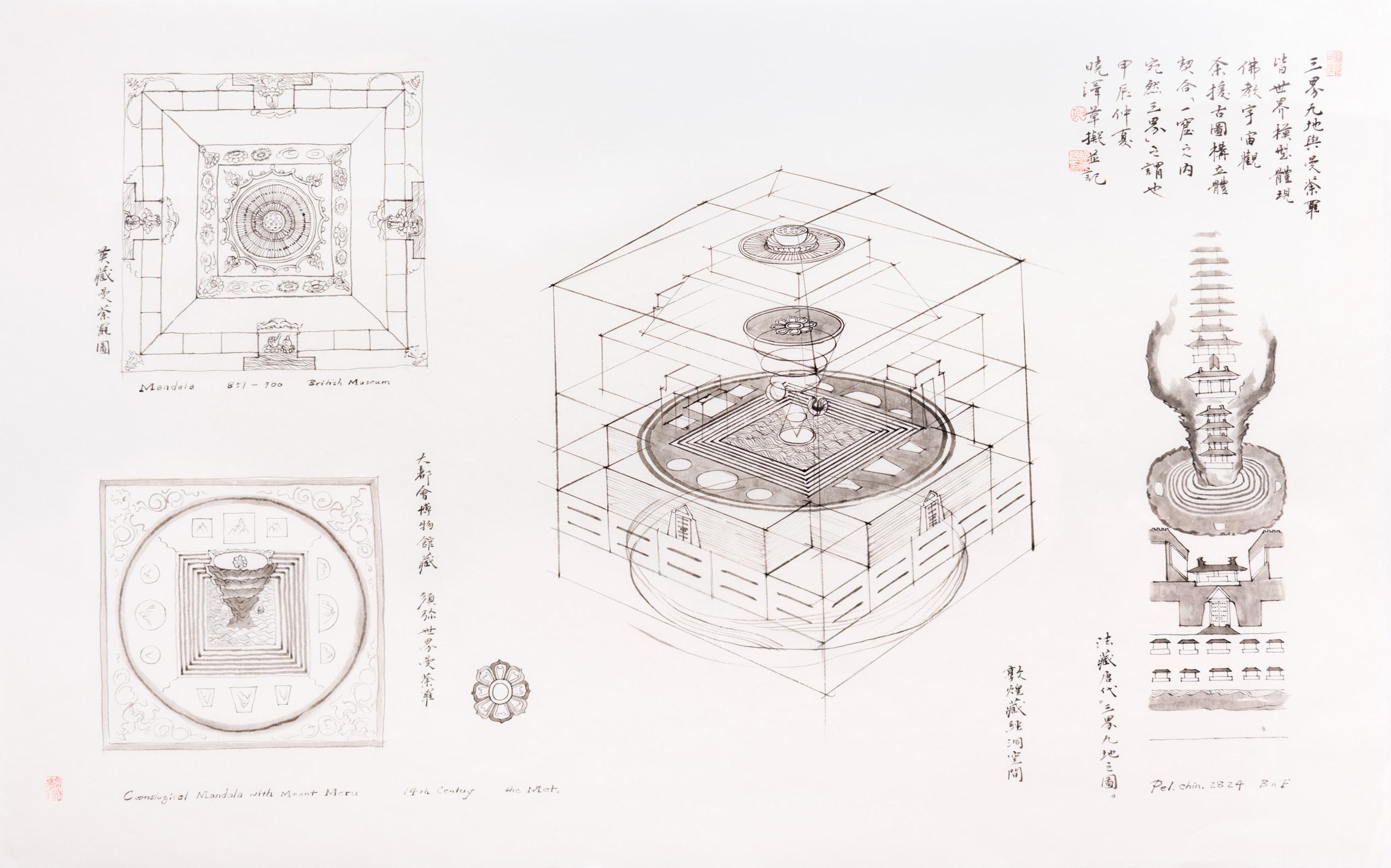
of the Universe, 2024
| 86.4h x 132.1w x 5.1d cm
Models
Ink on xuan paper
34h x 52w x 2d in

BIOGRAPHY
XU BING 徐冰
b. 1955 in Chongqing, China; Lives and works between Beijing and New York
Xu Bing is an artist and professor at the Central Academy of Fine Arts in Beijing (CAFA), where he graduated in 1981 and has since remained as a teacher. Widely recognized as a leading conceptual artist in the fields of linguistics and semiotics today, he continuously expands the boundaries of art with his groundbreaking creative works.
Xu Bing has been the recipient of several esteemed awards throughout his illustrious career. In 1999, he was granted the MacArthur Fellowship for his exceptional originality, creativity, personal direction, and significant contributions to society, particularly in the domains of printmaking and calligraphy. In 2003, he was honored with the 14th Fukuoka Asian Cultural Award in Japan for his noteworthy contribution to the advancement of Asian culture. In his acceptance speech, Okwui Enwezor lauded Xu Bing as an artist who transcends cultural boundaries, bridging the divide between East and West and expressing his thoughts and realities in a visual language.
Additionally, he won the first Artes Mundi Prize in Wales in 2004, and the Lifetime Achievement Award from the Southern Graphics Council in 2006. In 2010, Columbia University awarded him an honorary Doctorate of Humane Letters, while in 2015, he received the Andrew D. White Professor-at-Large from Cornell University and the Medal of Arts from the U.S. Department of State.
Xu Bing’s work has been displayed in numerous prestigious venues around the world, including the Museum of Modern Art and the Metropolitan Museum of Art in New York, the Guggenheim Museum, and the Sackler National Gallery in Washington, D.C. His work has also been exhibited at the British Museum, the Victoria and Albert Museum, and the Museo Reina Sofia, as well as the Joan Miró Foundation. Additionally, he has participated in several international exhibitions, including the Venice Biennale, Sydney Biennale, São Paulo Biennale, and Johannesburg Biennale.
His works are included in major art history textbooks such as Art Past, Art Present (Boston: Abrahams Inc, 1997) and Gardner’s Art Through the Ages: A Global History (Wadsworth: Cengage Learning, 2013).

ABOUT SQUARE WORD CALLIGRAPHY
Square Word Calligraphy is a new writing system designed by Xu Bing that visually resembles Chinese characters but is composed entirely of the English alphabet. Unlike the pseudo-characters of his earlier work Book from the Sky, these are real, readable words and true characters rather than invented ones. This system merges the visual structure of Chinese calligraphy with the phonetic script of English, creating a hybrid textual form.
As viewers attempt to decipher the writing, they often experience a moment of doubt, confusion, or hesitation, followed by a sudden shift in perception, a flash of understanding that releases the tension. In this way, the West encounters an Eastern form of calligraphic culture through an unexpected linguistic bridge.
In 2015, Xu Bing collaborated with FounderType to release the Founder Xu Bing Square Word Font, a conceptual art typeface. This marked a further extension of his artistic vision into everyday life, embedding his ideas more deeply within popular culture.


When you are old, 2007
Ink on xuan paper
69 x 140 cm | 27.17 x 55.12 in


你乐于浪费的时间,并⾮虚度
The Time You Enjoy Wasting Is Not Wasted, 2025
Ink on xuan paper
24.4 x 138 cm | 9.6 x 54.3 in


我思故我在
I Think, Therefore I Am, 2025
Ink on xuan paper
37.4 x 137 cm | 14.7 x 53.9 in


抄赵孟頫语录
Copying Zhao Mengfu’s Quotes, 2025
Ink on xuan paper
70 x 137.4 cm | 27.4 x 54 in


朗费罗名⾔
A Quote by Longfellow, 2025
Ink on xuan paper
97 x 108 cm | 38.2 x 42.5 in


Farewell to a Friend, 2025
Ink on xuan paper
68.5 x 152.7 cm | 27 x 60.1 in

YANG JIECHANG 杨诘苍
b. 1956 in Foshan, Guangdong Province, China; lives and works in Paris, France, and Ittlingen, Germany
Yang Jiechang’s artistic practice as a calligrapher-painter turned global social actor inverts the contemporary Chinese art world norm of using Western avant-garde forms to critique contemporary Chinese society. He accomplishes this by adopting the performative expressivity of the traditional brush and the paradoxical dialectics of pre-modern Daoist skeptics to expose the underlying social and cultural forces that shape our contemporary global reality.
Starting with his censored Massacre series in which he confronts the human toll of politically-violent authoritarian government, and continuing with his Crying Landscape series which he created for the 2003 Venice Biennale, Yang has made the critique of power, wealth, violence and terror central concerns of his artistic practice. With his purely abstract Layers of Ink works, which he inaugurated for the seminal 1989 trans-national show Magiciens de la Terre, and his figurative Ascension and Tales of the Eleventh Day series, Yang deals with the contrasting themes of material and spiritual transcendence, liberation of the individual, universal love and nature. When Yang deploys seductively masterful technique in service of psychologically disturbing or even horrifying imagery, our experience approaches the sublime—a realization of the inhuman that is both monstrous and transcendent.
Already in his student days at the Guangzhou Academy of Fine Arts where his graduation project Massacre (1982) on the devastation of the Cultural Revolution was censored, Yang Jiechang had adopted the position of provocateur. Following graduation he withdrew from art to study with Buddhist and Daoist masters. This led him to search for simplicity when he returned to painting. In 1988 he moved to Europe, where he has remained, living between Paris and a village near Heidelberg.
Among other places, Yang’s work can be found in the collections of Los Angeles County Museum of Art, Los Angeles; Brooklyn Museum, Brooklyn; Cantor Arts Center, Stanford University, Stanford; Berkeley Art Museum, Berkeley; The World Bank, Washington; Rockefeller Foundation, New York; Ministry of Culture, France; M+ Museum, Hong Kong; Hong Kong Museum of Art, Hong Kong; Hong Kong University Art Museum, Hong Kong; Guangdong Museum of Art, Guangzhou; Chengdu Museum of Art, Chengdu; Shenzhen Fine Art Institute, Shenzhen; Fukuoka Art Museum, Fukuoka; Sonje Museum of Contemporary Art, Kyongju, Korea; Museum for Arts and Crafts, Hamburg; Annie Wong Art Foundation, Vancouver; Swatch Collection, Switzerland; François Pinault Foundation, France; Ullens Foundation, Switzerland; Yageo Art Foundation, Taiwan; and Eslite Inc., Taiwan.


Cutting The Earth With a Knife, 1984
Ink on xuan paper
23 5/8 x 14 1/8 in | 60 x 36 cm


Cutting The Earth With a Knife, 1984
Framed: 66 x 38.75 cm | 26 x 15.25 in

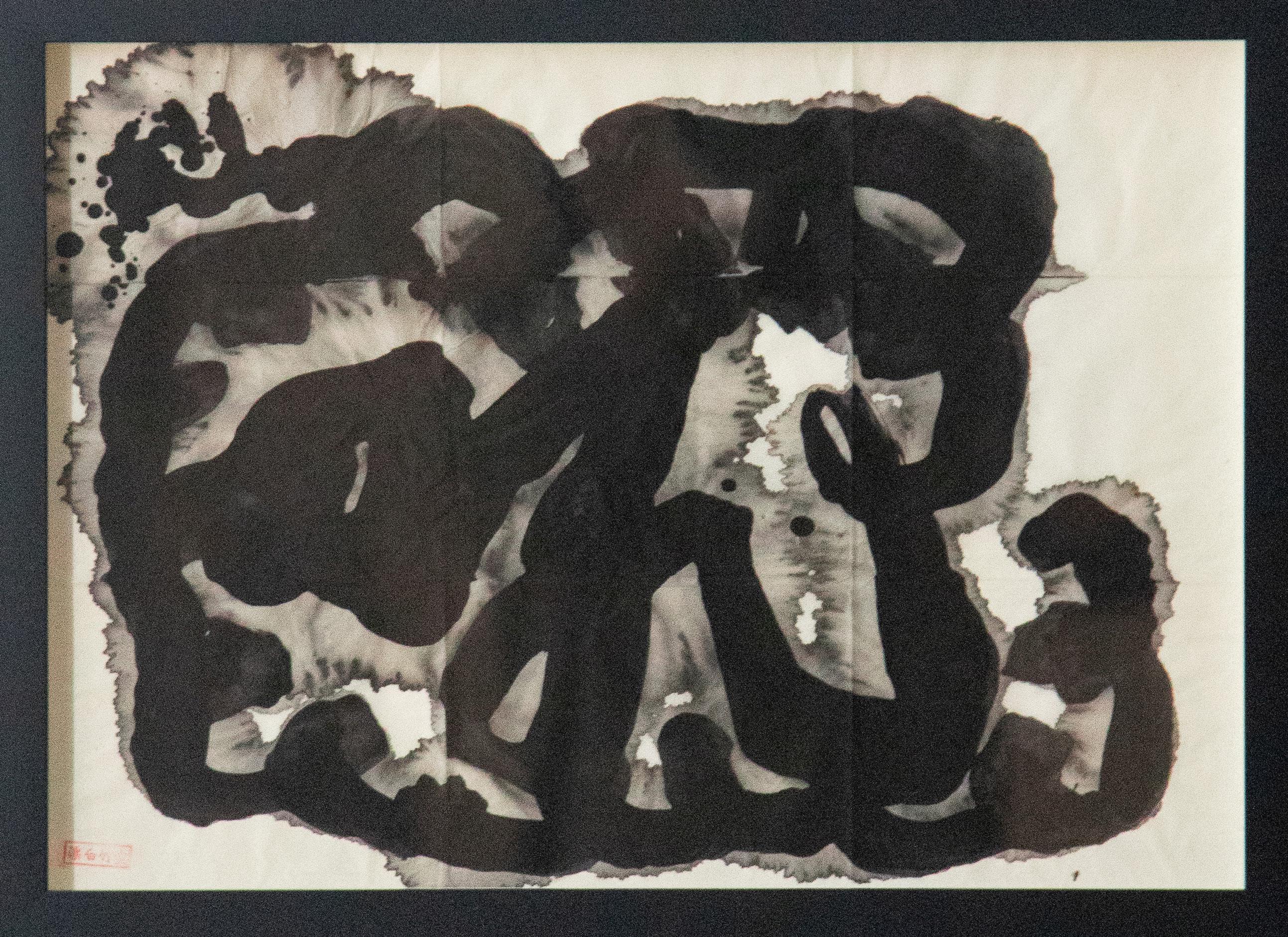
on xuan paper
14 3/8 x 20 1/4 in | 36.5 x 51.5 cm
Khong, 1984
Ink


1984
Framed: 39.25 x 54 cm | 15.5 x 21.25 in
Khong,


The Whole Ocean is Snowing, 2022
Ink and acrylic on paper mounted on canvas
27 1/2 x 35 3/8 in | 70 x 90 cm


The Whole Ocean is Snowing, 2022

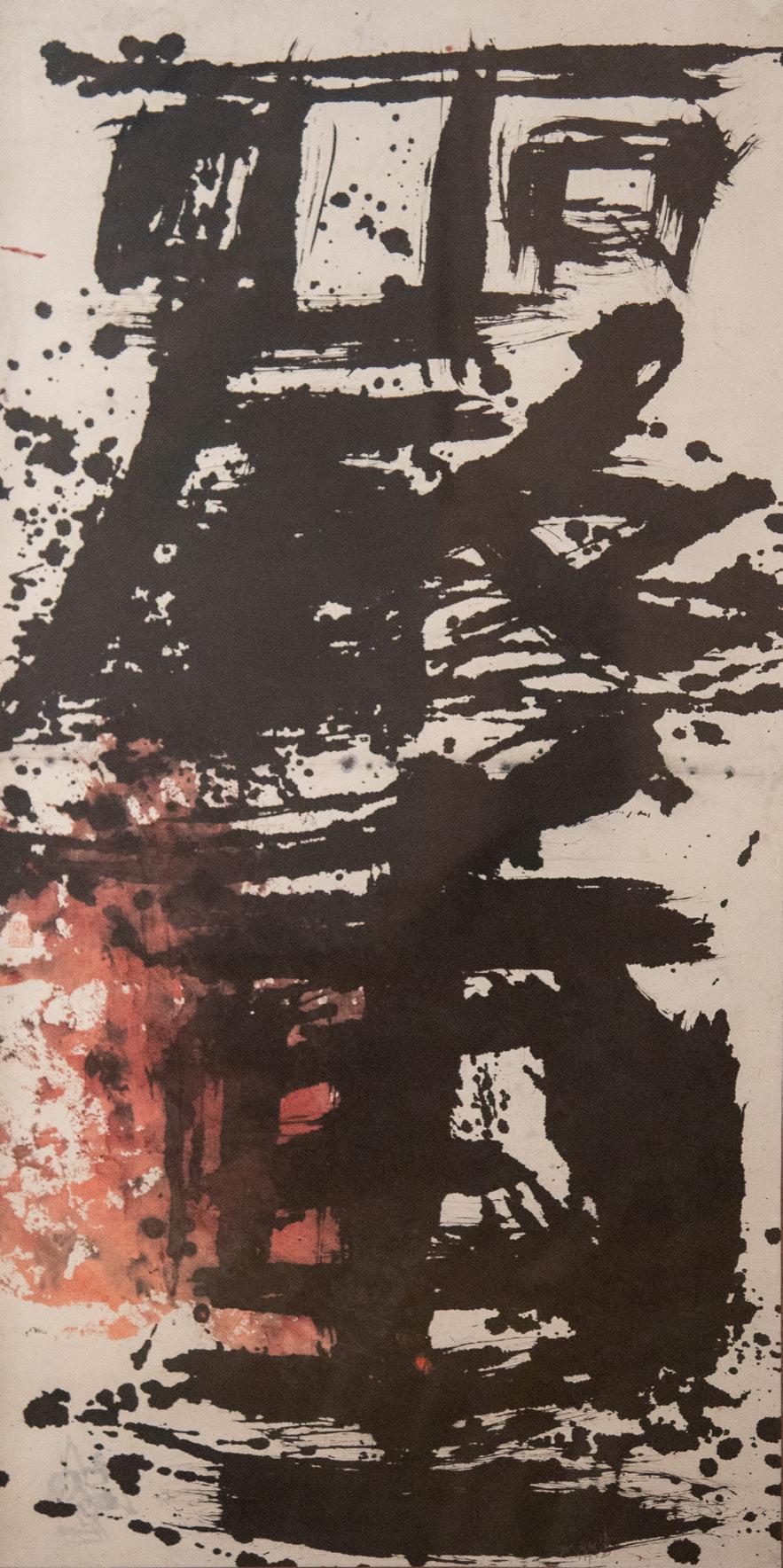
Zhong, 1981
Ink and color on xuan paper mounted with silk
54 3/8 x 27 1/8 in | 138 x 69 cm
Yan

ZHANG XIAOGANG 张晓刚
b.1958; lives and works
in Beijing, China
Zhang Xiaogang was born in 1958 in Kunming, Yunnan. He graduated from Sichuan Fine Arts Institute in 1982 and majored in oil painting. He currently lives and works in Beijing.
Zhang’s practice constantly interrogates the ideas of constructed identity and fabricated memory. Through narrative scenes, his paintings, rooted in personal experience and memory, articulate perception, stories, and emotions. He reorganizes and juxtaposes images from history and perception, collective memories, and personal reminiscences, actively bringing the past into the present.
Since the 1990s, Zhang has employed flinty, restrained, and daydreamy visual language to convey collective psychological memories and emotions characteristic of the times. This paradoxical presentation and mimesis of society, the collective, the individual, as well as family and blood relations, serve as a reinterpretation from the perspectives of art, emotion, and life, which holds strong contemporary significance and encapsulates the local contexts in the realm of the contemporary art.
SELECTED EXHIBITIONS
National Art Museum of China, Beijing, China
Sao Paulo Biennial, Sao Paulo, Brazil, 1994
Venice Biennale, Venice, Italy, 1995
Asia Pacific Triennial, Queensland, Australia, 1996
San Francisco Museum of Modern Art, SF, USA
P.S.1 Contemporary Art Center, New York, USA
Gwangju Biennale, Gwangju, South Korea, 2000
Guggenheim Museum, New York, USA
M+ Art Museum, Hong Kong, China
Art Gallery of New South Wales, Sydney, Australia
National Gallery of Victoria, Melbourne, Australia
Louis Vuitton Art Center, Paris, France
Taikang Art Museum, Beijing, China
West Bund Art Museum, Shanghai, China
Guangdong Museum of Art, Guangzhou, China
Xihai Art Museum, Qingdao, China
Star Art Museum, Shanghai, China
Ullens Center for Contemporary Art, Beijing, China
Song Art Museum, Beijing, China
Minsheng Art Museum, Beijing, China
Powerlong Art Museum, Shanghai, China
Ulsan Art Museum, Ulsan, South Korea
Pingshan Art Museum, Shenzhen, China
Sara Hildén Art Museum, Tampere, Finland
Queensland Art Gallery, Brisbane, Australia
Daegu Art Museum, Daegu, South Korea
Prague City Art Museum, Prague, Czech Republic
Today Art Museum, Beijing, China
Long Museum, Shanghai, China
Kunming Contemporary Art Museum, Kunming, China
Fosun Art Center, Chengdu, China
Wuhan United Art Museum, Wuhan, China
Hubei Art Museum, Wuhan, China


Description: 2005-20 《描述:2005-20》, 2005
White ink and oil on color photograph
40 x 50 cm | 15.75 x 19.5 in


Description: 2005-26 《描述:2005-26》, 2005
White ink and oil on color photograph
40 x 50 cm | 15.75 x 19.5 in


Description: 2005-14 《描述:2005-14》, 2005
White ink and oil on color photograph
40 x 50 cm | 15.75 x 19.5 in


Description: 2005-26 《描述:2005-26》, 2005
Framed: 51 x 61 cm | 20 x 24 in

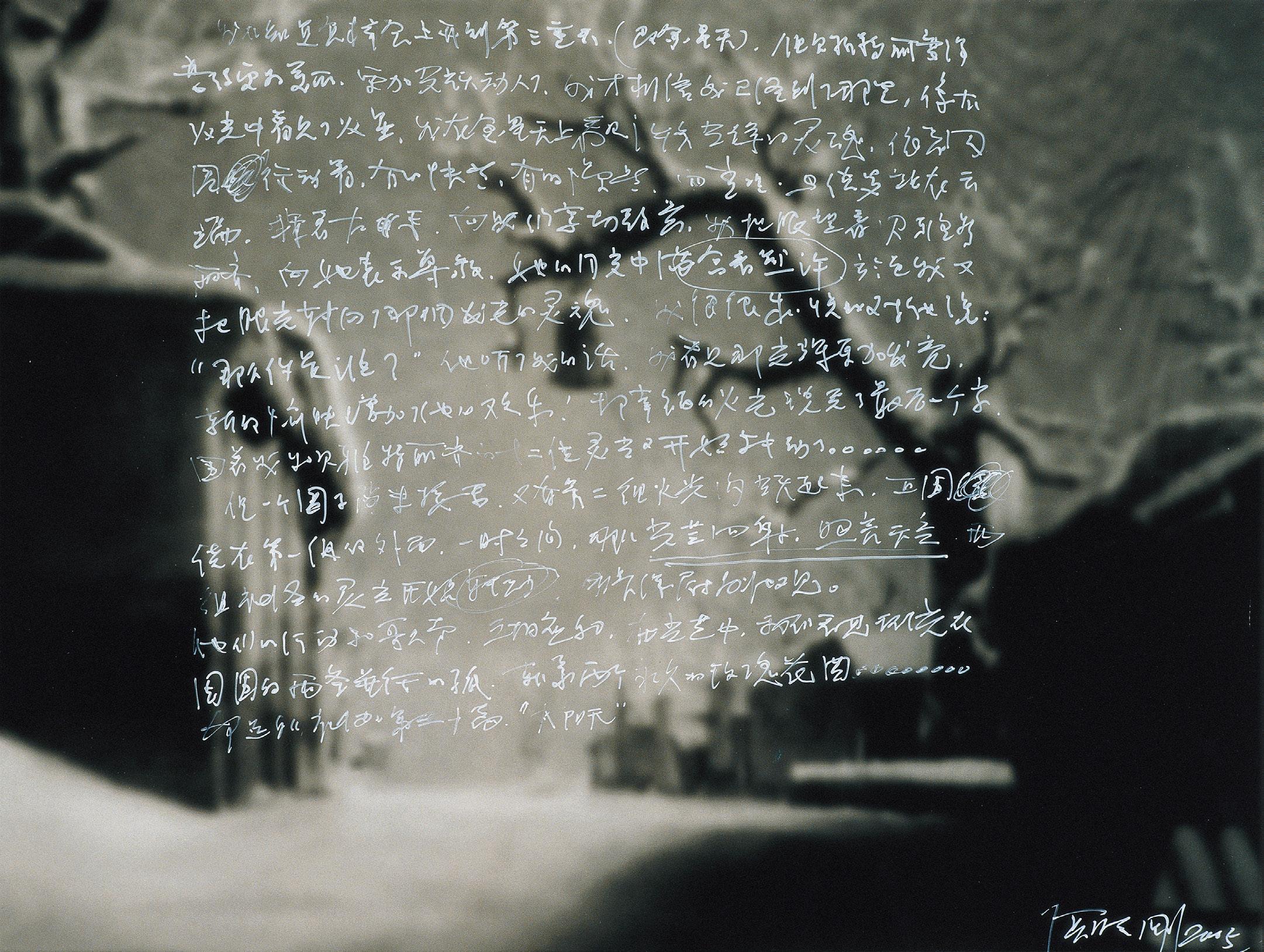
Description: 2005-43 《描述:2005-43》, 2005
White ink and oil on color photograph
40 x 50 cm | 15.75 x 19.5 in
